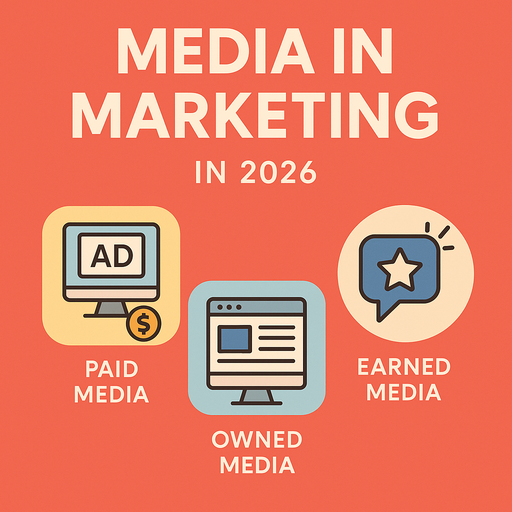Introduction
Animated corporate videos have become a powerful tool for businesses looking to engage their audience, simplify complex messages, and enhance their marketing efforts. As digital content continues to dominate the marketing landscape, the versatility and effectiveness of animated videos make them an invaluable asset. This article delves into the world of animated corporate videos, exploring their benefits, types, production process, and best practices for creating impactful content.
The Benefits of Animated Corporate Videos
Engaging and Captivating Content
Animated corporate videos have a unique ability to capture and maintain the audience’s attention. The use of vibrant visuals, dynamic characters, and creative storytelling can make even the most mundane topics interesting. Unlike traditional videos, animation offers limitless possibilities, allowing businesses to bring their ideas to life in an engaging and memorable way.
Simplifying Complex Messages
One of the greatest advantages of animated corporate videos is their ability to simplify complex concepts. Whether explaining a new product, illustrating a process, or breaking down intricate data, animation can present information in a clear and concise manner. Visual metaphors, infographics, and motion graphics can make complicated ideas easier to understand, ensuring the audience grasps the message quickly and effectively.
Enhancing Brand Identity
Animated corporate videos provide an excellent opportunity to reinforce brand identity. Through consistent use of colors, fonts, and style, businesses can create a cohesive visual language that reflects their brand’s personality. Animation allows for creative freedom, enabling companies to differentiate themselves from competitors and leave a lasting impression on their audience.
Cost-Effective Production
Compared to live-action videos, animated corporate videos can be more cost-effective. There’s no need for expensive equipment, locations, or on-screen talent. Animation studios can produce high-quality content with relatively lower budgets. Additionally, the ability to make changes during the production process without reshooting scenes can save time and resources.
Types of Animated Corporate Videos
Explainer Videos
Explainer videos are short, concise animations designed to explain a product, service, or concept. They often use a combination of voiceover narration, text, and visuals to break down complex information into easily digestible segments. Explainer videos are ideal for introducing new offerings, answering frequently asked questions, and educating customers.
Whiteboard Animation
Whiteboard animation videos simulate the process of drawing on a whiteboard. As the hand draws out the visuals, a voiceover narrates the story. This style is particularly effective for educational content and tutorials, as it mimics a classroom setting and enhances viewer comprehension.
Motion Graphics
Motion graphics involve the use of animated graphic design elements to convey a message. This type of animation is perfect for showcasing data, statistics, and abstract concepts. Motion graphics videos are often used in presentations, reports, and marketing materials to make information more visually appealing and engaging.
Character Animation
Character animation videos feature animated characters that interact with each other and the audience. These videos are excellent for storytelling and creating emotional connections with viewers. Characters can personify the brand, making the message more relatable and memorable.
Infographic Animation
Infographic animations combine the power of infographics with animation. They present data and statistics in a visually engaging way, making complex information easy to understand. Infographic animations are widely used in reports, presentations, and marketing campaigns to convey key messages effectively.
The Production Process of Animated Corporate Videos
Concept Development
The first step in creating an animated corporate video is concept development. This involves understanding the purpose of the video, identifying the target audience, and defining the key messages. A well-thought-out concept ensures that the animation aligns with the company’s goals and resonates with the audience.
Scriptwriting
Once the concept is finalized, the next step is scriptwriting. The script serves as the foundation for the video, outlining the narration, dialogue, and key points. A compelling script should be clear, concise, and engaging. It should also incorporate a strong call to action to guide the audience towards the desired outcome.
Storyboarding
Storyboarding involves creating a visual blueprint of the animation. Each scene is sketched out to represent the key moments and transitions in the video. Storyboards help in visualizing the flow of the animation, ensuring that the narrative is coherent and that the visuals align with the script.
Animation Production
With the storyboard approved, the animation production begins. This phase includes character design, background creation, and animating the scenes. Depending on the complexity of the video, different animation techniques may be employed, such as 2D animation, 3D animation, or stop-motion. The goal is to bring the storyboard to life with fluid and engaging motion.
Voiceover and Sound Design
Voiceover and sound design are crucial elements that enhance the overall quality of the animated video. A professional voiceover artist can deliver the script with the right tone and emotion, making the narration more impactful. Sound effects and background music add depth to the animation, creating an immersive experience for the audience.
Editing and Post-Production
The final stage of production is editing and post-production. This involves fine-tuning the animation, synchronizing the audio, and adding any additional effects or transitions. The video is reviewed and revised to ensure it meets the desired standards of quality and effectiveness.
Best Practices for Creating Impactful Animated Corporate Videos
Define Clear Objectives
Before starting the production process, it’s essential to define clear objectives for the animated video. What is the purpose of the video? Who is the target audience? What key messages do you want to convey? Having well-defined objectives ensures that the animation stays focused and achieves the desired outcomes.
Keep it Concise
Attention spans are short, especially in the digital age. To maximize the impact of your animated video, keep it concise and to the point. Aim for a duration of 1-2 minutes, ensuring that the content is engaging and informative without overwhelming the viewer.
Use a Strong Visual Style
The visual style of your animated video should align with your brand identity and resonate with your audience. Choose colors, fonts, and design elements that reflect your brand’s personality. Consistency in visual style across all your animated content helps in building brand recognition and recall.
Incorporate a Compelling Story
A compelling story can make your animated video more memorable and impactful. Whether it’s a customer success story, a journey of a product, or a hypothetical scenario, storytelling adds an emotional dimension to the animation. It helps in connecting with the audience on a deeper level and leaves a lasting impression.
Optimize for Different Platforms
Animated corporate videos are often shared across various platforms, including websites, social media, and email campaigns. To ensure maximum reach and engagement, optimize the video for different platforms. This includes adjusting the aspect ratio, resolution, and length based on the platform’s requirements.
Include a Clear Call to Action
Every animated corporate video should include a clear call to action (CTA). Whether it’s directing viewers to your website, encouraging them to contact your sales team, or prompting them to subscribe to your newsletter, a strong CTA guides the audience towards the next step.
Conclusion
Animated corporate videos are a versatile and powerful tool for businesses looking to engage their audience, simplify complex messages, and enhance their brand identity. By understanding the benefits, types, production process, and best practices, companies can create impactful animated videos that drive results. As the digital landscape continues to evolve, investing in high-quality animated content can set businesses apart and ensure their messages resonate with their target audience.









